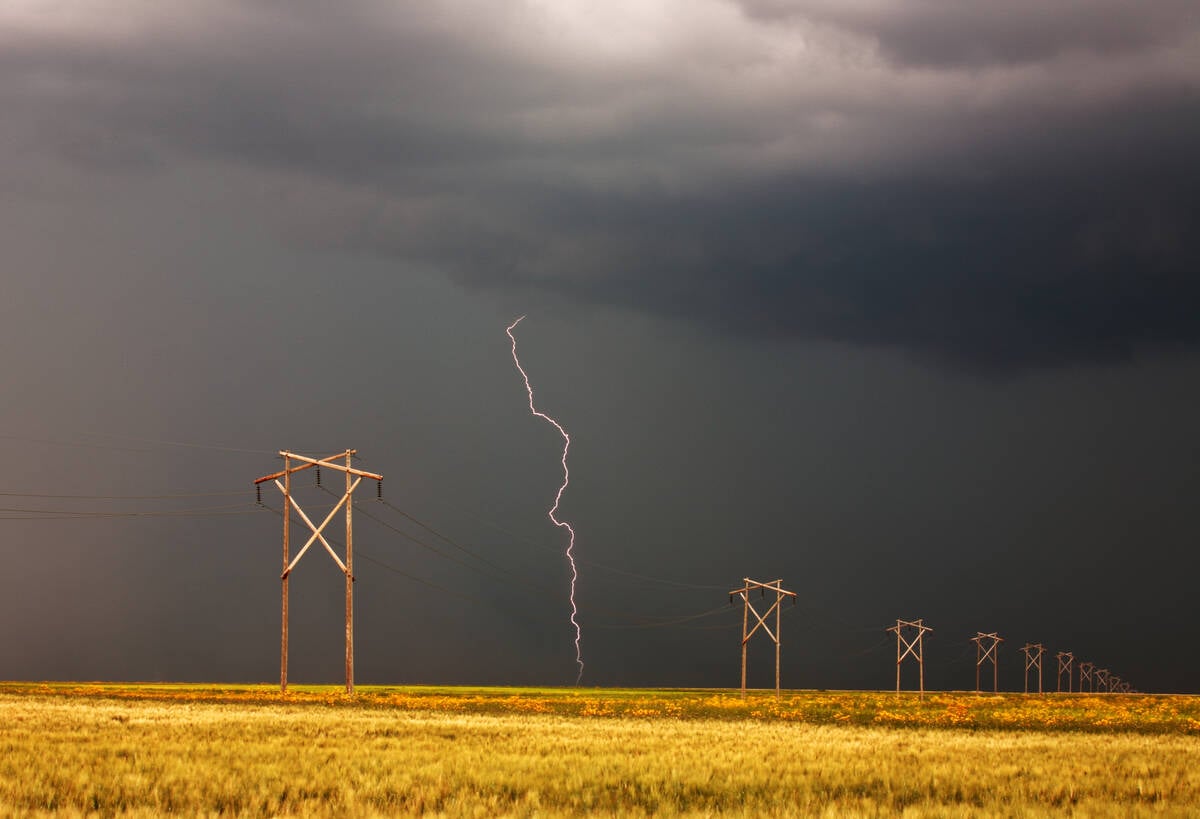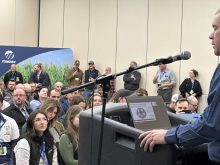Glacier FarmMedia — Regenerative agriculture is the future, and it starts with a shift in how we think.
That was the main message from soil scientist and conservationist Ray Archuleta at the Saskatchewan Soil Conservation Association conference in Regina in February.
“Regenerative farming is a mind shift,” said Archuleta, who farms in Missouri.
Read Also

Lightning gives and takes in Prairie fields
Lightning in fields can be a source of nitrogen but at times can result in crop damage which, at a glance, resembles a very localized disease outbreak, plant pathologist Ieuan Evans writes.
“If we learn how to emulate and mimic nature and work with it, not only does nature benefit, but we benefit financially and economically.”
The first step in making that shift happen is simply understanding that the soil is alive, Archuleta said — a concept he doesn’t believe the majority of farmers understand or appreciate.
“Fifty per cent of all biodiversity is in the soil. It is elegant. It’s complex. Once you start to embrace that and really believe it, the way you manage the ranch, the farm completely changes.”
The concept of regenerative agriculture has become a lot more mainstream in recent years, and there is evidence that Canadian farmers have adopted practices in line with the concept in recent decades. For example, about 60 per cent of Canadian farmers report using no-till or conservation tillage methods — in Saskatchewan that number increases to 80 per cent — while a growing number are interested in renewable energy production.
However, there are still many economic and practical barriers to adopting practices generally associated with regenerative agriculture for large-scale farms, which include not only no-till or conservation tillage but also cover cropping, managed grazing, composting and strategic crop rotations.

Archuleta said he used to be one of the farmers who didn’t see value in putting in the time and effort to adopt these practices. That changed when he was in his 40s, working in Oregon and living in Idaho, both major agricultural states.
“I couldn’t understand why you couldn’t make a living, two families couldn’t make a living on 500 prime acres of irrigated agriculture,” he said, adding he also began taking note of the state of soil health across the country.
“We have been working 90 years on trying to stop wind erosion and water erosion, and it’s still the number one water quality issue in the country. And we supposedly have some of the best universities in the world.”
That prompted him to question modern farming practices and the role of science in shaping them.
“You have to be very careful with science because you might not be asking the right questions. The question should have always been, ‘How do we have relationship with the natural system, and how do we emulate our farming to look more like nature?’ You’re approaching nature with the wrong paradigm. It didn’t work.”
However, although Archuleta now travels the world as an advocate for regenerative agriculture, he says his focus isn’t on convincing farmers to change their minds on the concept.
“I used to be the same way,” he says.
“Don’t think you’re going to convince people.”
He says instead he’s focused on working with the small minority of farmers who have already adopted a regenerative agriculture mindset and are practising it on their farms.
“Until we reach 13.5 per cent, we’re not going to get a complete conversion of the other system. The others will come later. I’m here to work with those that are walking this journey. They’re tired of being broke, they’re tired of the margins. They know this is not working.”
However, despite the numbers, he said he’s still hopeful that regenerative agriculture will become a common practice for farmers and a solution for many of our climate problems.
He also believes that there could be positive developments in this area in the United States in the near future, particularly now that Robert F. Kennedy Jr. has been confirmed as health secretary.
“Mr. Kennedy understands regenerative agriculture. He understands the two parts of the coin of health, the soil and food. So, there could be some changes on the horizon.”
He also believes that changes in the U.S. could have a direct impact on Canadian agriculture.
“Canada’s intimately linked to us. We need Canada, and Canada needs us. I hope it’s a trickle effect. The trickle effect is already happening.”
However, regardless of potential government action, Archuleta said he believes that we are going to need to have a major shift in how we produce food in the future.
“If the population is going to diminish in the next 50 to 100 years, what are you going to do with all that grain that we’re growing? Agriculture is going to have to shift. Our farms are too big, and people don’t want to hear that. The future is not about quantity, it’s about quality.”
He also said he’s hopeful this shift will come from farmers themselves.
“It always starts small, and it all starts from the bottom up, not from the government down. Great movements that change the world start from the bottom up.”














